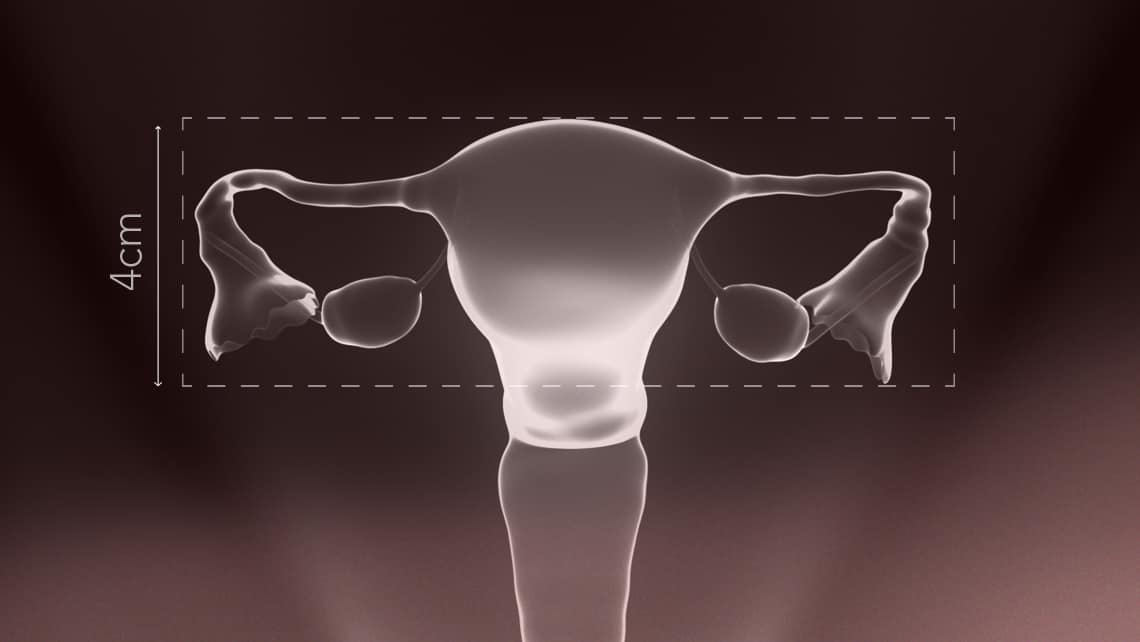
What is the infantile uterus and what are the possibilities of pregnancy?
The uterus, or womb, is a woman’s reproductive organ where pregnancy occurs, and is destined to undergo changes throughout the woman’s reproductive years.
In a small percentage of women, the uterus doesn’t correctly develop, which can sometimes lead to menstrual alterations and fertility problems.
Índice
- 1 What is an infantile uterus or hypoplastic uterus?
- 2 What are the infantile uterus or uterine hypoplasia causes?
- 3 How can we diagnose infantile uterus?
- 4 Is pregnancy possible in women with an infantile uterus (mention possible complications that may arise during pregnancy and/or delivery)?
- 5 Is there a treatment to correct the infantile uterus?
What is an infantile uterus or hypoplastic uterus?
Infantile uterus is a malformation of the urogenital tract that involves having an undersized uterus. Two subtypes have been described:
- Fetal uterus, in which growth is interrupted at birth and the dimensions don’t reach more than four centimetres, when the normal uterus size is approximately seven centimetres. This fact leads to fertility problems and amenorrhoea (absence of menstruation), making getting pregnant difficult.
- Infantile uterus, in which growth stops in childhood and doesn’t reach five centimetres. In this case, the prognosis for pregnancy is better, although there is a higher risk of miscarriage and premature birth compared to women with normal-sized uteruses.
What are the infantile uterus or uterine hypoplasia causes?
The most frequent causes are malnutrition during infancy and some genetic conditions that lead to malformations in the foetus. Other less frequent causes include infections, intense physical exercise during childhood, family history, drugs use and tumours.
How can we diagnose infantile uterus?
During puberty, the development of the female reproductive system takes place and a series of signs and symptoms which indicates is functioning well are externalised, such as the first menstruation, the appearance of armpit hair and acne.
One of the most characteristic symptoms of this disease is the lack of menstruation or amenorrhoea in adolescent women, although this is not always the case, as it can also manifest itself as very irregular and painful periods.
Evaluation of the internal genital organs such as the uterus and ovaries by abdominal or transvaginal ultrasound is a fundamental test and is generally sufficient to make the diagnosis. The gynaecologist will take measurements of the uterus and will be able to make an accurate examination. On some occasions, the diagnosis is made at a later age, when these women present reproductive problems or repeated miscarriages. However, on some occasions, it is necessary to complement the diagnosis with a hormone analysis or a hysteroscopy to evaluate the cavity from the inside.
Is pregnancy possible in women with an infantile uterus (mention possible complications that may arise during pregnancy and/or delivery)?
Yes, pregnancy is possible in these women, however, the success will depend on the uterus size and function. Thus, there are cases where women can carry a normal pregnancy to term, other cases where patients have miscarriages, bleeding or premature births, and cases where the condition is more severe and pregnancy may not be achieved.
Is there a treatment to correct the infantile uterus?
Although the surgical techniques that have been tried to try to enlarge the cavity have not obtained satisfactory results, in some patients, hormonal treatment with oestrogen and progesterone does prove to be beneficial as they manage to improve the functioning of the uterus.
The recommendations for patients with this uterine condition are: relative rest and close monitoring throughout the pregnancy by their obstetrician.
Dr Ruth Romero, a gynaecologist at Instituto Bernabeu
